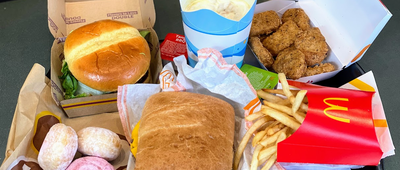Where's the Beef?
Plant-based meat alternatives are having a moment. Brands like Beyond Meat are enjoying a surge in demand as coronavirus outbreaks close down meat-processing plants, according to MarketWatch. With faux-meat patties, sausages, and grinds popping up in grocery stores, and actual meat often in short supply (or more expensive than usual), we put some of the leading brands to a blind taste test against 100% genuine beef. Could one of the plant-based products actually fool us into thinking it's the real thing?
Related: 17 Places to Order Pork, Steaks, and Other Meats Online

















